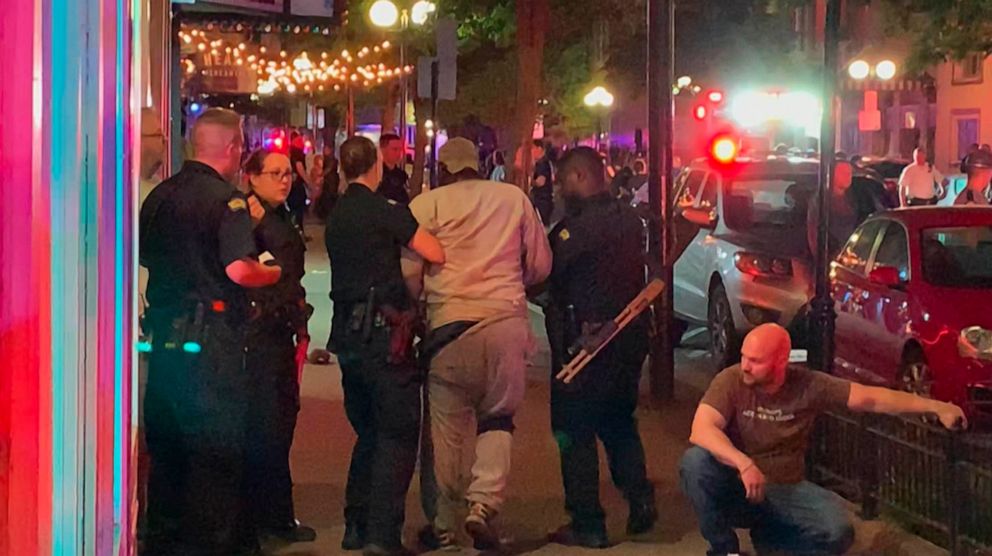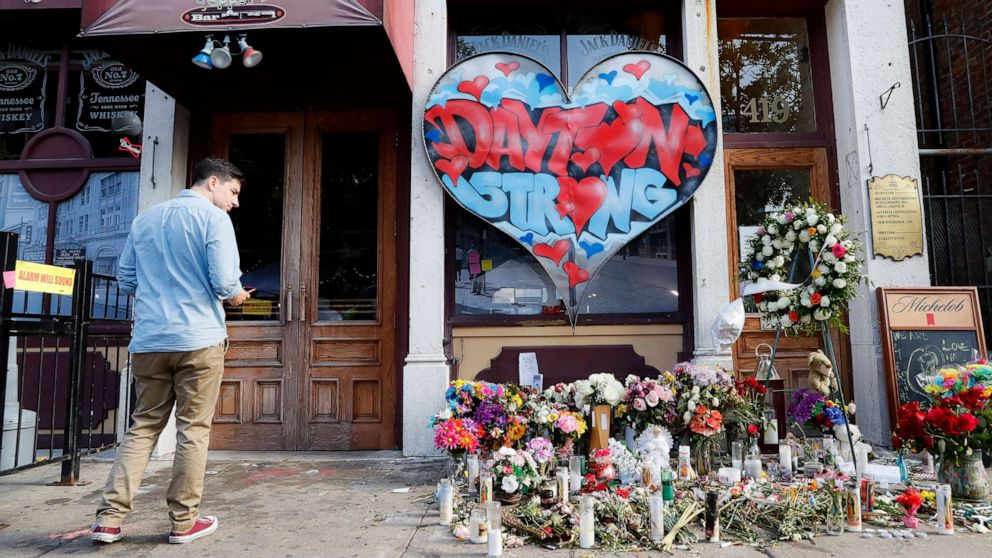Alleged Dayton gunman Connor Betts showed signs of misogyny, mirroring a grim pattern for shooters
Many questions remain in the motivations of the man who allegedly committed a mass shooting in Dayton, Ohio, last weekend, leaving nine dead before responding officers shot him to death.
But officials briefed on the investigation told ABC News the suspected shooter demonstrated a misogyny that was far more extreme than any of his political leanings.
In that, he follows a bleak pattern among mass shooters.
"There are red flags," Jacquelyn Campbell of the Johns Hopkins University School of Nursing and one of the leading domestic violence researchers in the nation told ABC News. "There are things about these shooters' behavior before these things happen that I think we as a country need to think hard about in terms of trying to make these things less frequently happen."
After many mass shootings, information comes out that links the shooter to gender-based and domestic violence -- and many massacres, like this one, include female family members, partners and ex-partners among the victims.
Ten of 2018's 20 mass shootings, as defined by ABC News, were instances of domestic violence, including against intimate partners or family members, a January ABC analysis showed. One of the victims of the Dayton shooting was Megan Betts, the alleged shooter's 22-year-old sister.
A Mother Jones analysis released this spring found that in at least 22 mass shootings since 2011, which accounts for over a third of public attacks, the shooters "had a history of domestic violence, specifically targeted women, or had stalked and harassed women."
Those attacks range from ones where the shooter had a history of violence against women -- like the 2016 Pulse nightclub shooting and 2017 Sutherland Springs church shooting -- to those apparently motivated by hatred of women: the 2014 Isla Vista shooting and 2018 Tallahassee shooting, among others.
And some are actual incidents of domestic or intimate-partner violence -- such as a January shooting in Louisiana and a 2018 shooting in Chicago.

It's difficult to define a profile of mass shooters, as those incidents are relatively rare, Sierra Smucker, an associate policy researcher at the nonprofit RAND Corporation think tank, told ABC.
But "domestic violence, unlike mass shootings, is incredible common," she added.
The domestic violence homicide rate increased from 2015 to 2017 -- the latest available years for data -- after a long decline, a Northeastern University study published this spring found.
"A larger atmosphere in which domestic violence is accepted and happens often is going to definitely increase the likelihood that misogyny and hatred of women and violence towards women can become a mass shooting," Smucker said.
Campbell noted that domestic and intimate partner violence is committed even by young people -- mostly boys and teens -- in middle and high school, often due to an accumulation of trauma experienced in childhood. But, she said, "we don't have any really good interventions for them."
High school classmates of Connor Betts, 24, the suspected Dayton shooter, for example, said he was suspended for making a "rape list" of female classmates he wanted to sexually assault, The Associated Press reported. They said he was later suspended over a "hit list" found in a school bathroom.
A former camp-mate of Betts told The Cincinnati Enquirer he saw Betts choke a girl he was dating as a teen.
ABC News could not independently confirm that report.
That is what they're seeing as the threat, as this faceless feminism that's coming after them.
Beyond misogyny and domestic violence, much of the conversation around shootings lately has been about white nationalism and racism, as highlighted by the El Paso shooting, in which the alleged shooter targeted Hispanics, authorities said.
But Gina Longo, an assistant sociology professor at Virginia Commonwealth University, said racist motivations and misogynistic ones are not independent of each other.
"These are all intersectional and they all influence and inform one another," she said.
That violence often bubbles up, Longo added, from men seeing "different minority groups, including women," claiming rights and privileges historically awarded to white men in America.
"You hear a lot of men talking not necessarily about women in their own family, but 'feminism,'" Longo told ABC News. "It's 'out there' and there are certain groups of women who are trying to 'poison the well,' if we want to look at it like that, with these different ideas -- and that is what they're seeing as the threat, as this faceless feminism that's coming after them."
This can be exacerbated, she said, by online chatter. Just as social media can be used to influence elections, Longo said, "I think it's the same thing with promoting violence or misogyny or letting it fester in certain places."

While law enforcement and social scientists are still playing catch-up to understand how people's actions online translate into real life threats, those close to an individual in real life have a role to play, the experts say, with policies like extreme risk protection orders, known as "red flag" laws.
With those policies, lawmakers could take lessons from the fact that the presence of a gun in a domestic violence situation greatly increases the risk of homicide.
In the case of the Dayton shooting, as far as public evidence has shown, Betts had not been charged with any sort of domestic violence, which could have prevented him from obtaining a gun. But his ex-girlfriend said he allegedly had a fascination with violence.
"She may not have wanted to break up with him (she might think there are possibilities there), she may not want him to go to jail, she may not want to press charges on domestic violence even if there was something there, but she might say, 'This guy does not need to have this huge arsenal of guns, this is concerning to me,'" Campbell said, arguing that there should be an easy and encouraged way of doing so as part of laws and policies.
There are laws in many states that prevent a person from having access to a gun if they are charged or convicted of domestic violence or if a restraining order is in place, and states with those more restrictive laws tend to have lower rates of domestic violence homicides.
"Extreme risk protection orders are really drawing on the success, in some ways, of these domestic violence-related gun laws to expand that policy mechanism to people who may not be in situations that are specifically domestic or intimate partner-based but may suggest they are a threat to people around them if they have access to firearms," Smucker said.
"[Those] laws recognize that the people who are most likely to know when someone may be dangerous are people who are very close to that person," she added.




